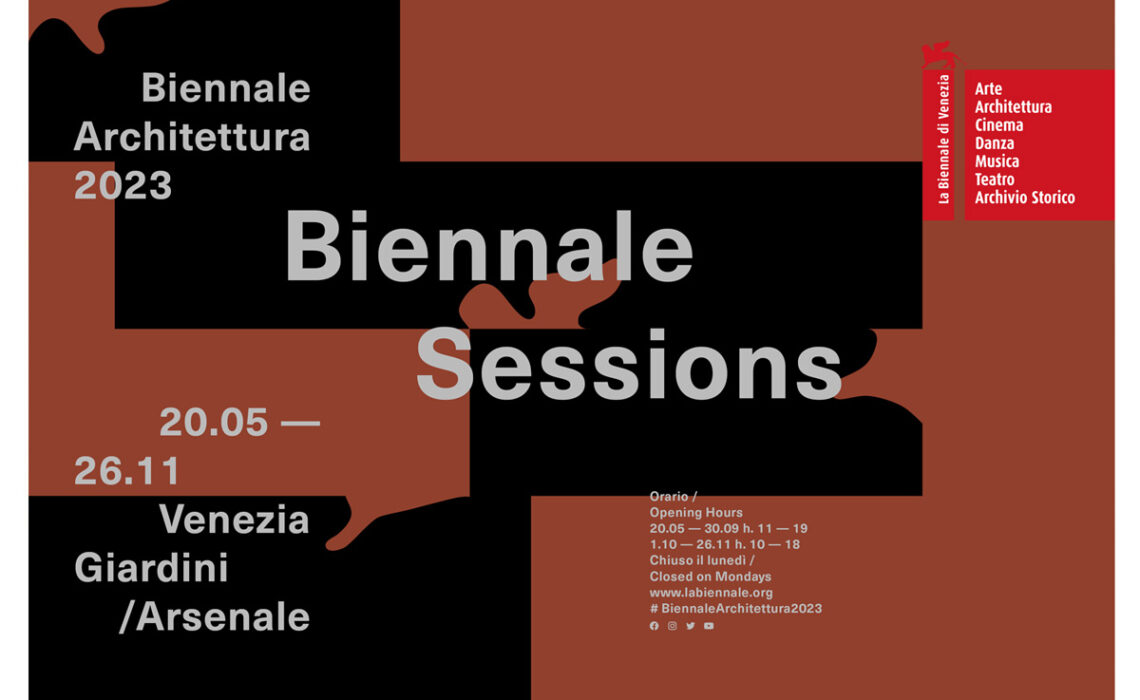
A gaseous archipelago: the ritual of the myth of memory
“This tomb contains the mortal remains of a young English poet who, on his deathbed, in the bitterness of his heart, in the face of the evil power of his enemies, he wanted these words to be engraved on his tombstone: ‘Here lies a man whose name was written in water’”.
John Keats’ epitaph
The project we are presenting for this 2023 Architecture Biennale edition is a project that fits within an archipelago, building its own one. Our first reflections therefore move precisely around this theme.
The archipelago is a system that helps us understand and enclose the multiple and at the same time it is an attempt at a possible representation of it. In it we can find evident parallels with the urban territory in a “tension of order” in which it is possible to formulate an idea of a recognizable city, where the multiple is no longer dispersed, but it is presented in its conceptual essence as a comparison and absolute juxtaposition between the parts. The archipelago therefore defines a whole, a list, a dialogue between parts, between single individuals who dialogue with each other and with its “purpose”, with its “being part of a whole”, a “discursive formula” that unites and connects. For this reason, the archipelago is by its nature intolerant of a hierarchical order, and no island constitutes a firm axis capable of structuring in the form of a state. An archipelago is in fact without a Center, since its Center is none other than an energetic relationship which obliges each part of it to relate to the other, and all towards the “absent homeland” which is none other than the myth of an origin that is never present. A Myth that creates identity and subjectivity that is renew from time to time and that seems to incessantly whisper “I Remember You”. It is precisely by repeatedly seeking and recreating one’s identity that one suddenly and surprisingly discovers oneself as multiple. The space that builds the Archipelago is one of the many that live at the same time, a space always poised between being an expression of wealth and the risk of its continuous extreme fragmentation.
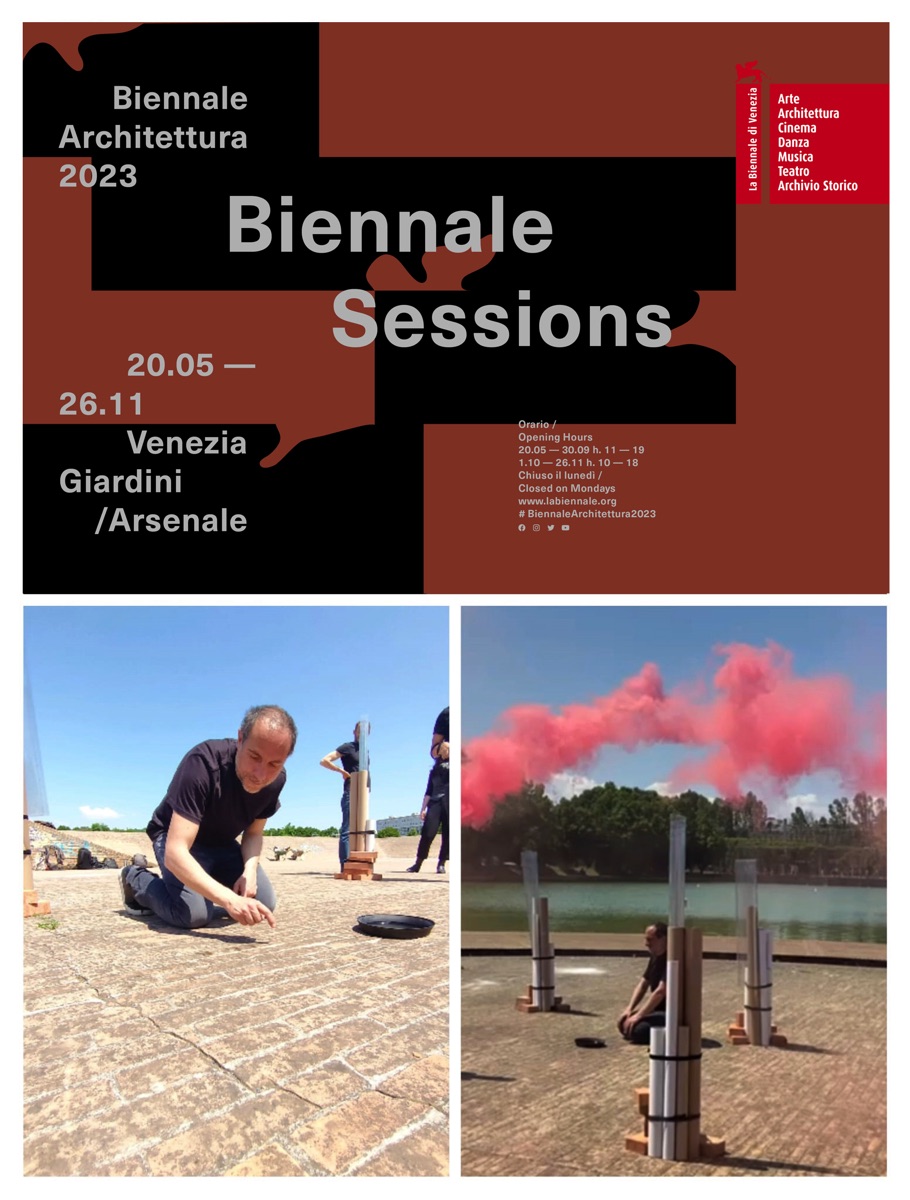
A space that in the contemporary era acquires “the dowry of temporality”. Today, nothing is meant to last forever. Time has become ephemeral. Space instead acquires the component of an interconnected performance. A dynamic archipelago in constant mutation for a “gaseous society” of performers.
The proposed use of the Archipelago should therefore not be understood as an all-encompassing formula, but as a logos of connection, which itself becomes a form. A form that presents itself as the generating system of a dynamic relation: a body in transformation within which myth and memory give rise to an identity. In this sense, the form should no longer be understood as a mere static representation. It is not a solid body. But a dynamic relational body in continuous transformation and, in this sense, “gaseous”. In fact, gaseous does not mean an immaterial body, but a purely relational condition within, which energy and spatial systems prevail, whose dynamics are transformed into a pure tension of desire, myth and memory.
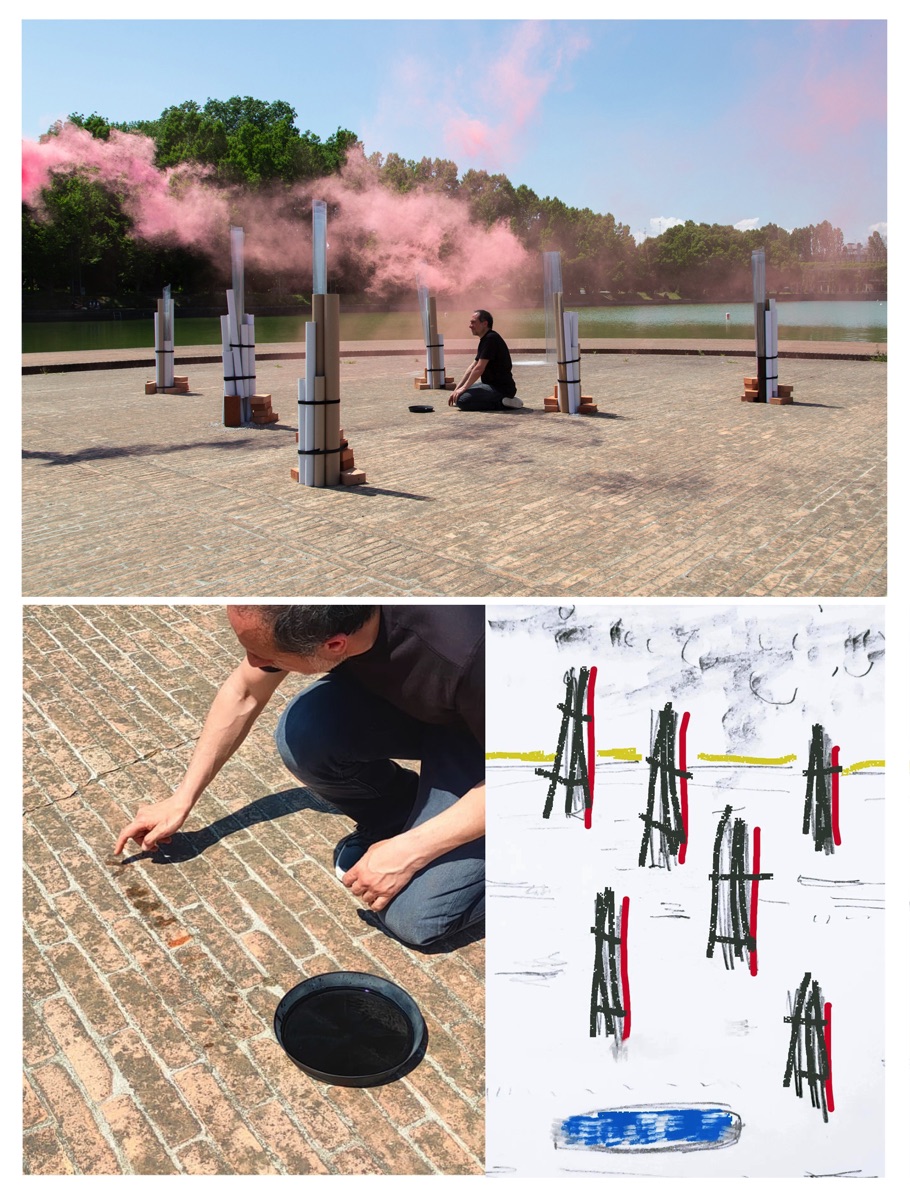
Our gaseous archipelago comes to life from these assumptions. An installation made up of six precarious islands/rooms, of various sizes made with poor materials such as cardboard tubes, bricks and plexiglass sheets. A temporary, nomadic, anarchic space where a red cloud plays the unusual role of a symbolic temporary cover: performative and sculptural landmark of a free spatial formula in continuous transformation that appears and disappears, like a sentence written with water.
A space, what we are going to build, which is at the time a place for the initiation of a performative rite within which “I REMEMBER YOU” will be repeatedly written on the floor, with one’s finger soaked in water. With this operation, you don’t have time to complete the sentence before the water has dried and you
have to go back and start to writing it again, trying to keep alive the “memory” of this reality, of this place, of this delimited territory, built from a spatial relationship between body, man and the myth.
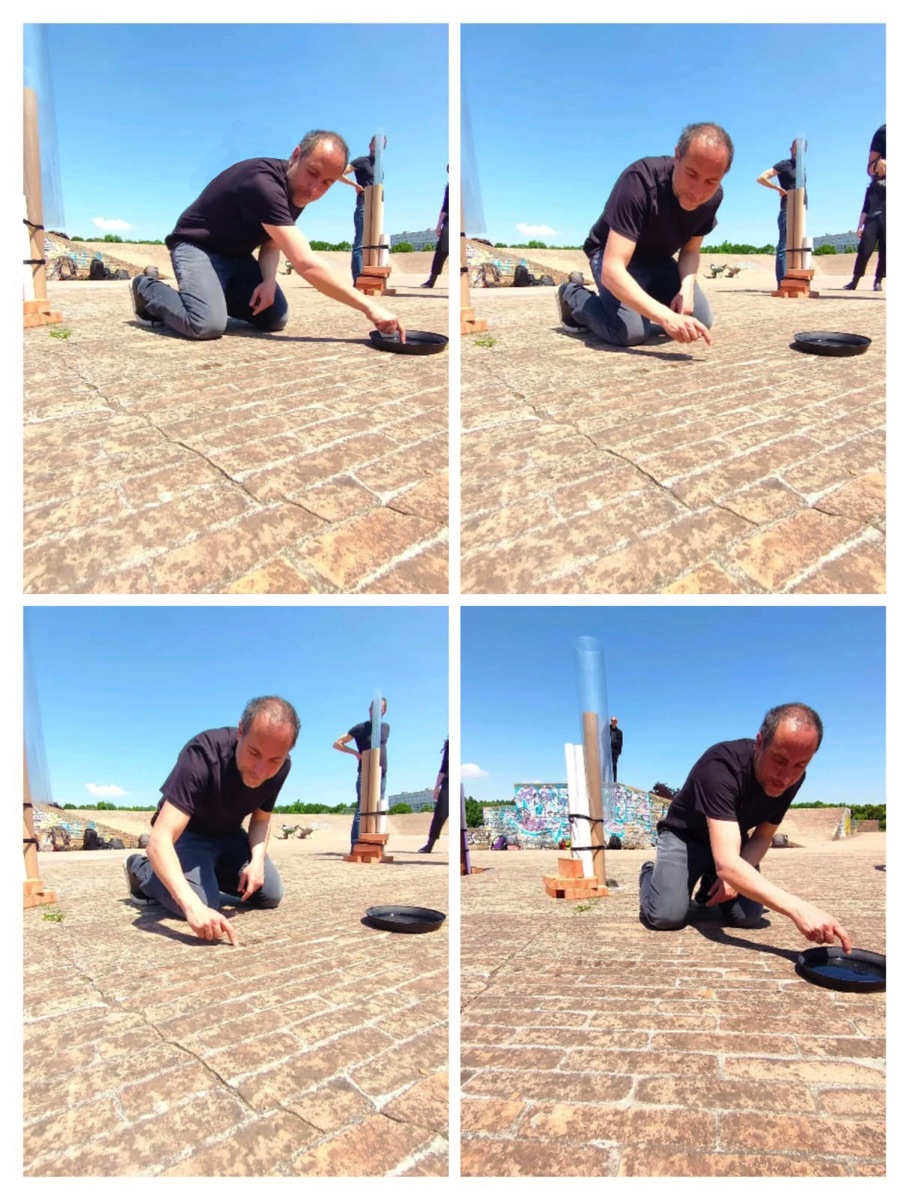
This installation, which becomes a poetic metaphor of a multiple space, whose most intimate reference is Venice: its landscape, its island, its bell towers, its moorings, its canals, its squares, its being the scene of a continuous struggle between the geometries of its buildings and the anarchy of the water, which dissolves and fragments every form. In fact, there are six spatial elements, just as there are six districts of Venice, while the circular element recalls the ancient basin of the Torcello baptistery. However, Venice is only a
pretext, a place where personal memory falls apart, to transform this installation into a device that wants to collect a universal message.
This work wants to invite us to rethink space and our ways of conceiving it by telling us the cosmology of a universe of senses and codes, where objects and space can transform into “exceptional” points as soon as they enter into relationship with each other and with our body and memory. In this way they reflect in the celestial vault of time as free astral configurations that serve as a crucial orientation tool within our history, thus changing chaos into cosmos. Enveloped, as in dense red cloud, they will thus transform themselves into the free construction of a gaseous constellation of an anarchist temporary camp, which fights against any possible imperialism.
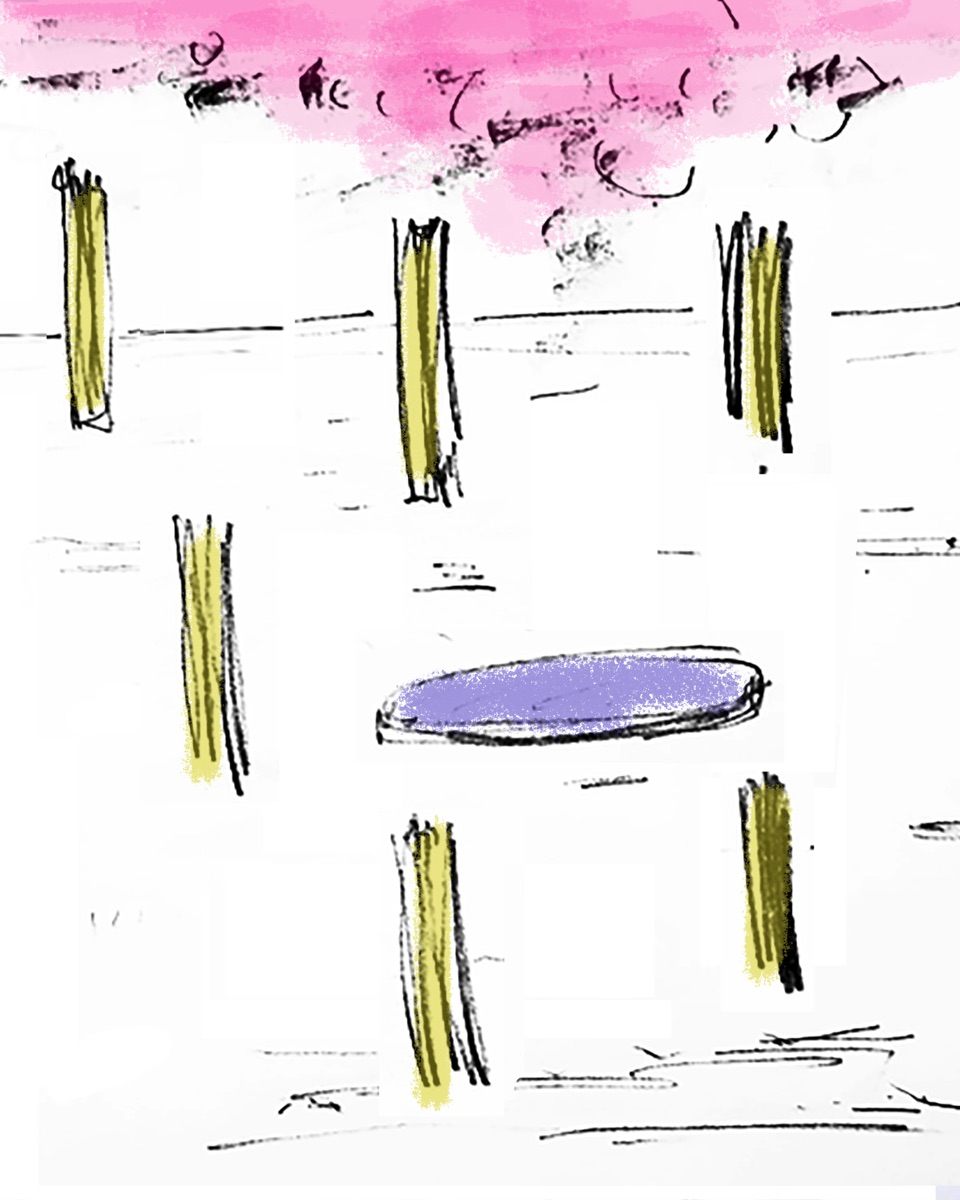
Project: Emmanuele Lo Giudice & Floriana Orlandino
Realization: Emmanuele Lo Giudice in collaborazione con Simone Fecchio
Performer: Emmanuele Lo Giudice
Materials: recycled cardboard tubes, plexiglass sheets, bricks, circular container, water, red smoke bomb
Place: Albanese Park, Bissuola, Mestre (VE)
Date: Sunday 21 st May 2023
Event: Ecologia (A)sociale, Biennale Sessions, La Biennale di Architettura di Venezia 2023
Curators: Escuela Moderna, Marche Arte Viva, Fuori Posto Mestre